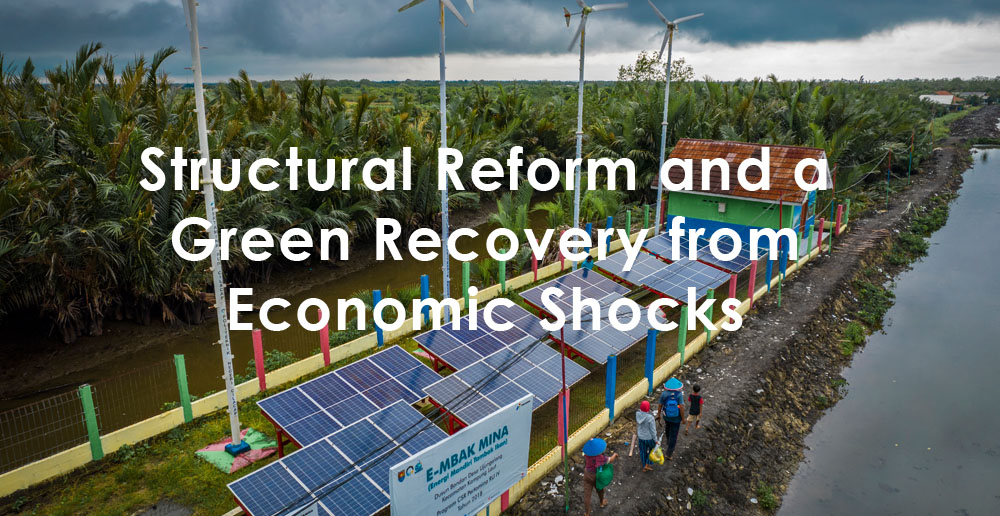
What is Structural Reform?
The APEC Economic Committee defined structural reform as “measures that change the institutional and regulatory framework in which businesses and people operate to help the market work efficiently.”
Examples include:
• Establishing good regulatory processes that encompass the views of key sectors of society
• Reducing transaction costs of market activity
• Regulating product and service markets, e.g., licensing fees and other costs
• Regulating labor markets
• Addressing limits on competition by reducing entry barriers and market structure
• Implementing better policy advice, sound laws and legal frameworks
Structural reforms are a way for governments to address economic and societal problems with a view of the longer term.
APEC economies currently face two major challenges

1. To repair the economic damage caused by the COVID-19 pandemic:
COVID-19 has been the most significant pandemic event in the past century and has caused massive suffering and disruption. It has affected lives across all economies and caused an economic slowdown beyond almost anything experienced in nearly a century, bringing about higher economic inequality
2. To respond to climate change and other environmental threats:
The Asia-Pacific region faces a long list of environmental challenges, including pollution, deforestation, uncertain energy security, the depletion of natural resources, and climate change, among others. Many APEC members are increasingly exposed to extreme weather events, which have a huge negative socioeconomic impact
Green Structural Reform

A solution to both challenges is structural reform aimed at:
- Improving conditions for economic growth
- Responding to environmental threats and setting the foundations for the greening of economies
- Formulating responses to future economic shocks
Green structural reforms facilitate the adjustment to economic activities that cause less damage to the environment and create conditions for improved growth in member economies.
Green structural reforms should include a mix of policy instruments, including:
- Market-based instruments, to encourage the efficient use of natural resources
- Regulations to improve the functioning of markets and encourage the production and use of environmentally friendly goods and services
- Complementary enabling policies on innovation, investment, procurement, capacity-building, green industrial policy and international cooperation
The Role of APEC

APEC could emphasize key capacity-building and knowledge-sharing activities in areas
where more work is needed to transition towards a green economy. Potential examples of capacity-building programs include:
- Learning how to develop pricing schemes (for instance: carbon pricing)
- Getting a better understanding on the process to develop and implement green regulatory measures, including complementary enabling policies
- Strengthening collaboration with the private sector
- Strengthening inter-institutional collaboration within and across economies
- Reducing information asymmetries among different actors (for instance: government and industries, firms and consumers, and inter-sectoral firms)
- Mobilizing finance toward green investments, keeping in mind competitive and well-structured green investment projects
As APEC economies seek to recover from economic shocks such as those emanating from the effects of COVID-19, the need to embark on green structural reforms has never been more critical. However, APEC members, both developed and developing, are only just beginning to carry these out. This is because these reforms involve significant complexity and uncertainty; and sound analytical frameworks as well as reliable data are only now starting to be developed.
While green structural reforms will need to be tailored to individual economies, there are many areas where APEC economies can learn from each other as they seek to meet these challenges.

